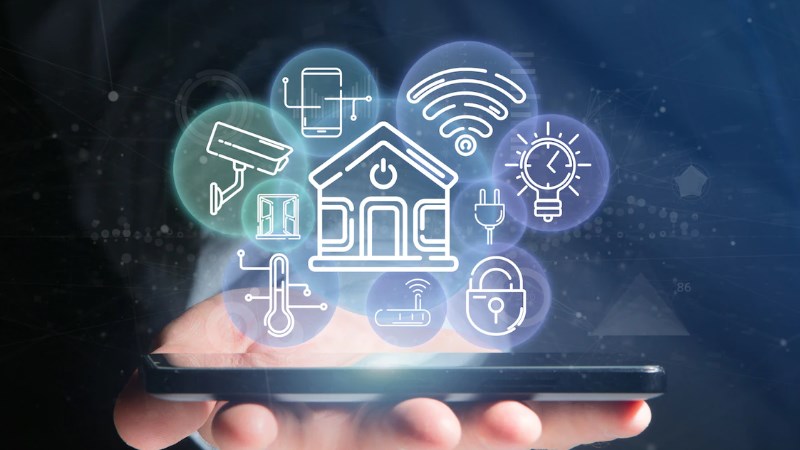
Smart home devices, also known as the Internet of Things (IoT) devices, refer to any device or appliance that can be connected to the internet and controlled remotely. These devices include popular items such as smart speakers, thermostats, security cameras, and door locks. With the rise of technology and the growing demand for convenience, the popularity of smart home devices has skyrocketed in recent years.
The global smart home market is expected to reach $133.01 billion between 2022 and 2027, growing at a CAGR of 18.36% during the forecast period. This increase in popularity has led to more homes being equipped with these devices, raising concerns about the potential cyber security risks they may pose.
How to Protect Your Smart Home Devices?
Here are a few things you can do to protect your smart home devices.
1. Set Strong Device Passwords
One of the most critical steps in protecting your smart home devices is to reset your password to a stronger one. According to ExpressVPN’s report, a strong password is essential to protect your devices and personal information from cybercriminals.
So, here are some tips on how to set a strong password to improve security measures for smart home devices.
- Choose a long password: The longer the password, the more secure it is. Aim for at least 12 characters.
- Use a mix of characters: Include a combination of lowercase and uppercase letters, special characters, and numbers.
- Avoid common words and phrases: It includes words found in the dictionary or commonly used phrases. Also, avoid using easily guessed information such as your name, birth date, contact number, or address.
- Do not use the same password for numerous accounts: If a hacker can access one of your accounts, they will try to use the same password to access other accounts.
- Change your password regularly: A good practice is to change your password every 3-6 months.
- Use a password manager: A password manager can help you generate strong yet unique passwords for all your accounts and store them securely.
- Be cautious when sharing your password: Only share it with people or service providers you trust, and avoid writing it down or sharing it over an unsecured connection.
2. Update Smart Home Device Software Frequently
Smart home device manufacturers release software updates regularly to fix security vulnerabilities and bugs. It is essential to stay up-to-date with these updates to ensure that your devices are protected against the latest threats.
3. Use Multi-Factor Authentication
Multi-factor authentication (MFA) is an extra security layer requiring users or consumers to set two or more identification forms before accessing an account or device. It can include a password, a fingerprint, or a security code sent to a mobile device.
4. Enhance Home Network Security
Securing your home network is another vital step in protecting your smart home devices. Ensure your router has a strong password and uses the latest security protocols. Additionally, it is imperative to use a firewall to protect your network from unauthorized access.
5. Avail of Third-Party Security Solutions
You can use some third-party security solutions to protect your smart home devices. These solutions can include antivirus software, intrusion detection systems, and security cameras.
Cybersecurity Risks of Smart Home Devices
Smart home devices can be vulnerable to various cybersecurity threats. So, below we have detailed the different types of cyber threats and some instances of security breaches in smart home devices to date.
Types of Cybersecurity Threats
One of the most significant cybersecurity risks of smart home devices is the potential for hacking. These devices often connect to the internet, making them vulnerable to cybercriminals’ attacks. Hackers can use various methods, such as malware and phishing, to gain access to your device, steal personal information, and take control of your home.
Another risk is unauthorized access to your device. Smart home devices often have default passwords that are easy to guess, making them vulnerable to hackers’ attacks. Additionally, many devices lack robust security features, making it easy for hackers to access your device and steal confidential details about your home. Later using them, they can rob your house.
Instances of Past Security Breaches in Smart Home Devices
In 2016, a massive botnet made up of infected IoT devices, known as the Mirai botnet, was used to launch a massive DDoS attack that knocked several major websites offline.
In 2017, a security flaw in the popular smart camera manufacturer Ring allowed hackers to access the device’s live feed, potentially giving them access to the user’s personal information.
Impact of Security Breaches on Smart Home Device Consumers
Security breaches can have a devastating impact on homeowners, both financially and emotionally. The loss of personal information, such as credit card numbers and social security numbers, can lead to identity theft and financial losses. Additionally, the loss of privacy and control of your home can be emotionally distressing.
Regarding the device manufacturer, security breaches can damage the company’s reputation and decrease consumer trust in smart home devices. It can lead to reduced adoption of smart home technology and a loss of revenue for companies.
Conclusion
As the adoption of smart home technology becomes increasingly widespread, individuals must be mindful of the potential cybersecurity threats that these devices may pose. While these devices offer a wide range of convenient features and benefits, they can also serve as entry points for hackers seeking access to your personal data or taking control of your home.
To ensure that you are protected from these risks, you must secure your devices, such as setting strong passwords, keeping your software up-to-date, and being cautious when clicking on links or opening attachments from unknown sources.

Taylor is a freelance SEO copywriter and blogger. His areas of expertise include technology, pop culture, and marketing.
















